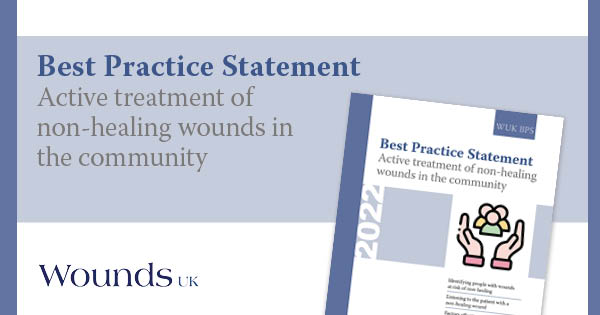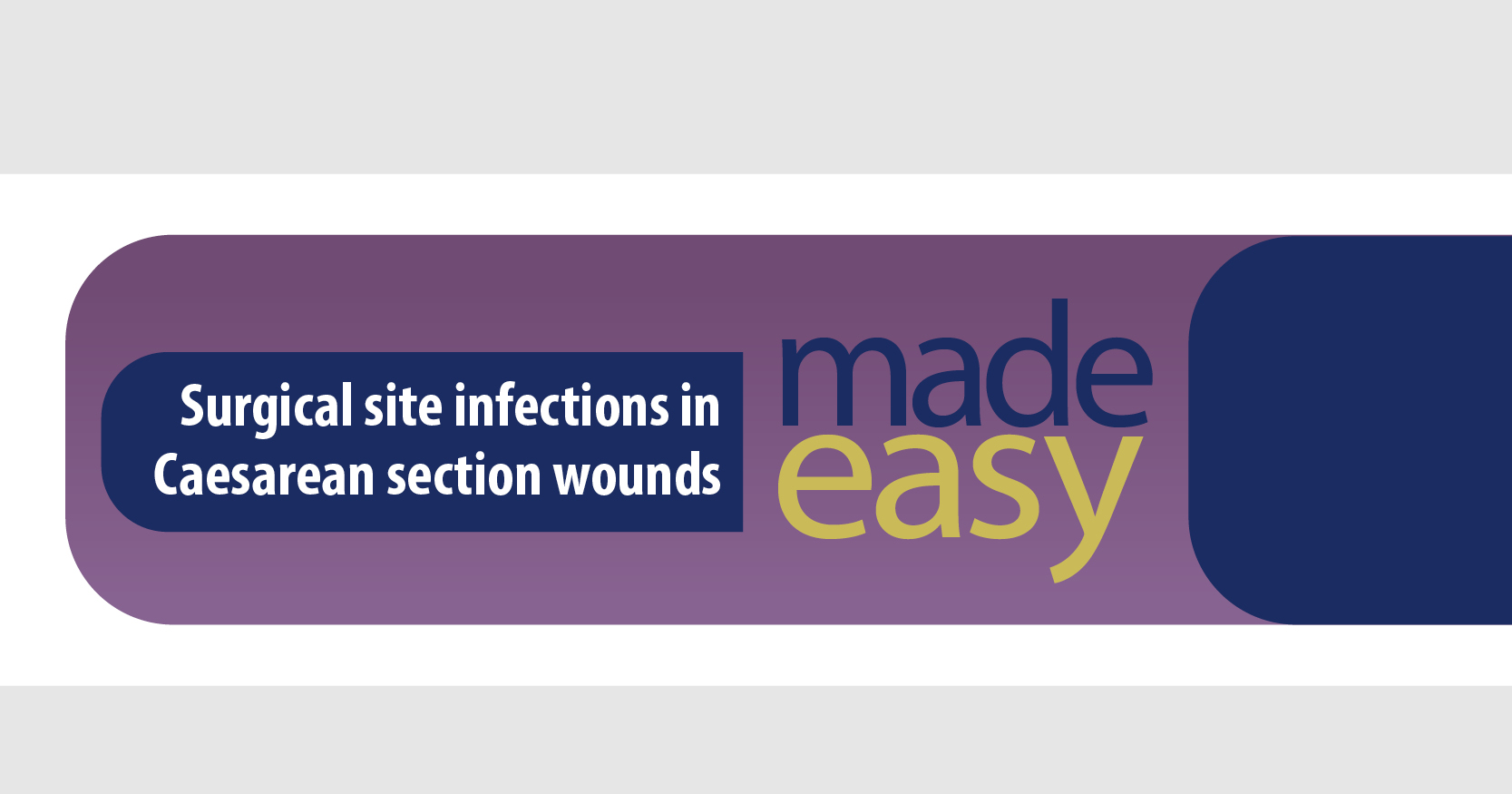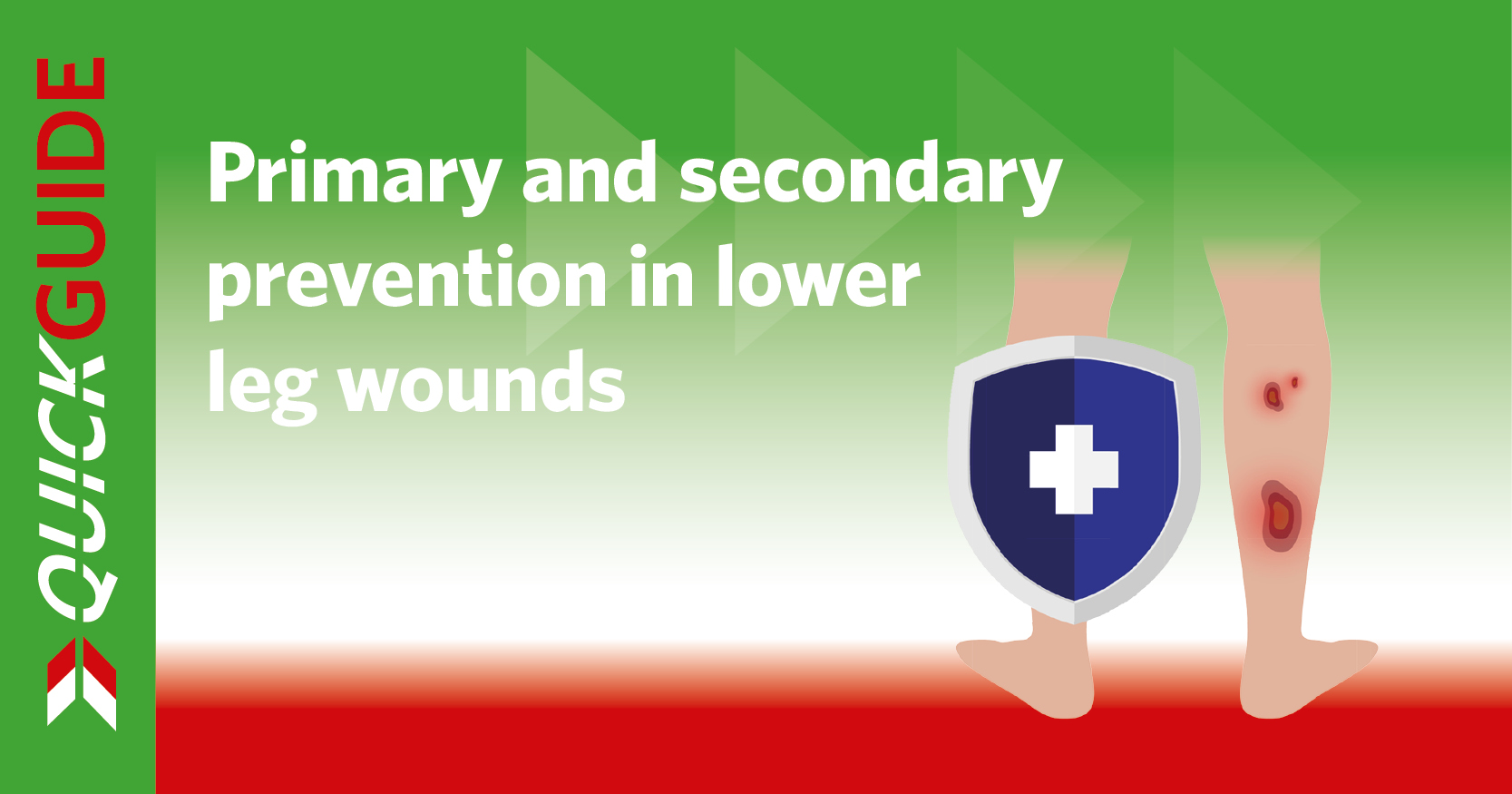Non-healing wounds develop due to an interruption in the body’s natural healing process. It is accepted that within the normal parameters of acute wound healing, re-epithelialisation should be reached within 4 weeks (Vowden and Vowden, 2016) or reduce in size by 40% following 4 weeks of optimal therapy (Leaper and Durani, 2008; Gwilym et al, 2022). From a patient’s perspective, living with a non-healing wound can often mean experiencing a decrease in quality of life with the potential of increased pain and anxiety (Olsson et al, 2019).
There has been a 71% increase in the annual prevalence of wounds between 2012/2013 and 2017/2018 (Guest et al, 2020). Thirty percent of all wounds are non-healing, and these disproportionately represent 67% of the total wound expenditure. This continued burden is set to be equally challenging alongside staff shortages relating to recruitment and retention, and other operational pressures following the after-effects of the COVID-19 pandemic. These challenges are felt most in the community setting.
In the burden of wounds study (Guest et al, 2015), high numbers of wound-related patient contact occurs in the community, i.e. patient visits to GP practices (10,815,655), practice nurses (19,744,618) and community nurse visits (10,932,199) compared with specialist nurse visits (51,106) and hospital outpatient visits (4,277,334). However, while most wounds are managed in community settings, there is considerable scope for improvement in care delivery with around 30% of wounds lacking a differential diagnosis, preventing the delivery of appropriate care (Guest et al, 2015).
Successful outcomes for patients with non-healing wounds relies on accurate assessment and identification of wound aetiology, alongside consideration of local and systemic factors that may be contributing to non-healing (Werdin et al, 2009). This document was developed with the overall objective of supporting practitioners, particularly in the community, to improve the care of patients with non-healing wounds by:
- Explaining the importance of holistic wound assessment in recognising if the patient’s wound is likely to heal with evidence-based principles of wound care and standard dressings
- Empowering staff with the tools to escalate care to more active treatments to achieve better outcomes for people with non-healing wounds in the community when needed (e.g. single-use negative pressure wound therapy [sNPWT]; negative pressure wound therapy [NPWT])
- Increased awareness of available resources/specialists appropriate to the management of wounds
- Recognising how and when to refer to a specialist for guidance, advice or management.
The Best Practice Statements (BPSs) were derived from a 1-day meeting of the Expert Working Group. The BPSs were further developed by the Expert Working Group during an extensive review process. Each BPS is accompanied by a related statement that explains to patients with a non-healing wound what they should expect from high-quality wound care.
The Expert Working Group recognises that some elements of the BPSs may be challenging to achieve in some care settings. However, the hope is that, by setting out what is best practice and the processes required, practitioners may be supported in the quest to make organisational changes that would benefit patients with non-healing wounds.







